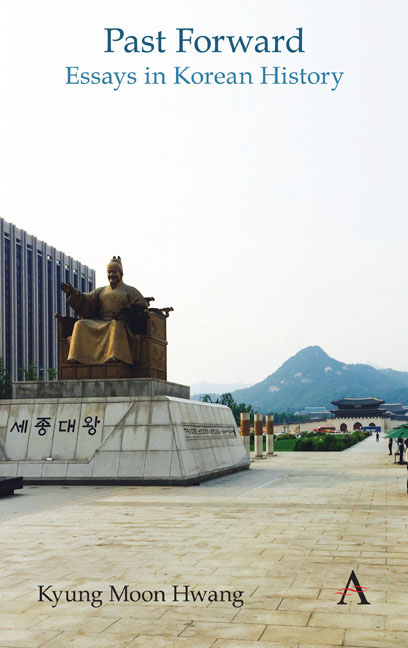Book contents
- Frontmatter
- Contents
- List of Figures
- Foreword
- Chronologies of Korean History
- Themes
- Acknowledgments
- Note on Romanization and Spelling
- Part I Circulating History
- Part II Durable Traditions
- Part III Ancient Remains
- 16 The Beginnings of Korean History
- 17 Ancient and Present Gaya
- 18 Empress GI
- 19 Speaking of Northern Korea, not North Korea
- Part IV Dynastic Depths
- Part V Modern Origins
- Part VI Challenges of Nationhood
- Part VII History Makers
- Part VIII External Presences
- Part IX Trials of Modernization
- Part X Gripped by the Past
- Index
19 - Speaking of Northern Korea, not North Korea
from Part III - Ancient Remains
- Frontmatter
- Contents
- List of Figures
- Foreword
- Chronologies of Korean History
- Themes
- Acknowledgments
- Note on Romanization and Spelling
- Part I Circulating History
- Part II Durable Traditions
- Part III Ancient Remains
- 16 The Beginnings of Korean History
- 17 Ancient and Present Gaya
- 18 Empress GI
- 19 Speaking of Northern Korea, not North Korea
- Part IV Dynastic Depths
- Part V Modern Origins
- Part VI Challenges of Nationhood
- Part VII History Makers
- Part VIII External Presences
- Part IX Trials of Modernization
- Part X Gripped by the Past
- Index
Summary
So much attention is paid to North Korea and to the artificial national division implanted on the peninsula since the 1940s that we often overlook the geographical divisions that extend much further back in time. In fact, from the beginning, the balance between north and south on the peninsula has determined the character of “Korea” itself.
If we forgo the various origins myths, we can safely locate the cradle of Korean civilization in the Goguryeo kingdom, which appears to have begun about two thousand years ago in what is now Manchuria. Goguryeo extended its domain southward into the peninsula, but by the fourth-century CE, it ran up against states in the south like Baekje, whose rulers appear to have descended from Goguryeo, and Silla.
These three kingdoms later came to be viewed as part of a single national group, but that was a typical exercise of justifying the conquest of formerly different peoples. In language, culture and other features, the so-called “Three Kingdoms” were characterized by difference as much as commonality, and the strongest contrast appears to have been between the two southern kingdoms, on the one hand, and the northern kingdom of Goguryeo, on the other.
Silla's defeat of Baekje and then Goguryeo in the 660s brought about the first “unification” of the peninsula. But Silla's subsequent difficulties in driving out the Chinese, to whom it had turned for assistance in subduing the other two kingdoms, limited the area of its territorial seizure. In fact, most of the northern part of the peninsula came under the dominion of a kingdom, Balhae, whose leaders might have come from Goguryeo, but whose people were not recognized as the same as those of Silla and Baekje. This suggests again the distinctiveness of the southern civilizations from Goguryeo, which left the strongest imprint on the origins of Korean civilization.
These challenges of how to consider and integrate the northern areas were faced by both the “Unified Silla” kingdom and its successor state, Goryeo. But Goryeo's founder, Wang Geon, came from the west–central part of the peninsula and hence was keen on shifting the political heart of the country northward from Gyeongju in the southeast, which had been Silla's capital.
- Type
- Chapter
- Information
- Past ForwardEssays in Korean History, pp. 53 - 55Publisher: Anthem PressPrint publication year: 2019



